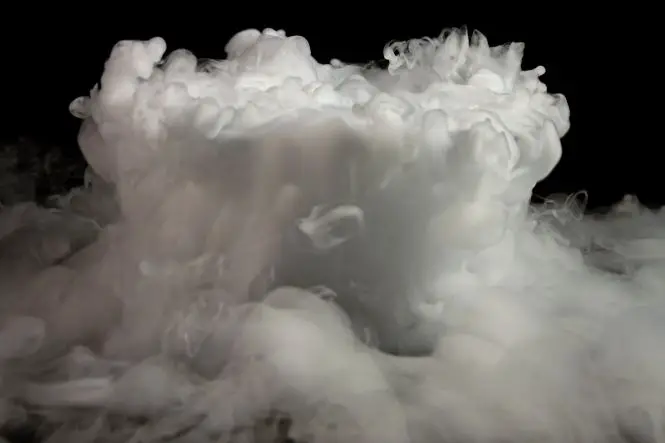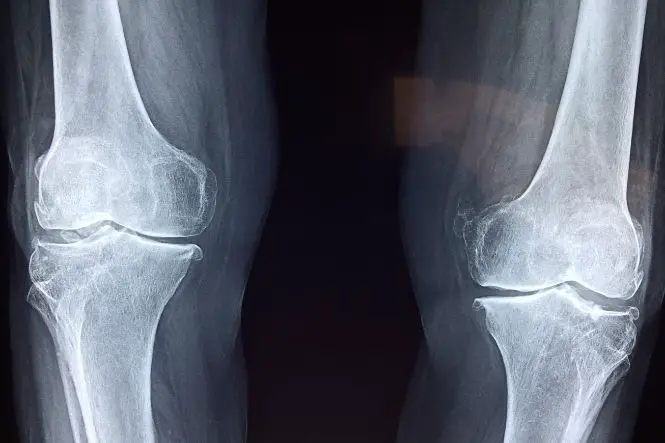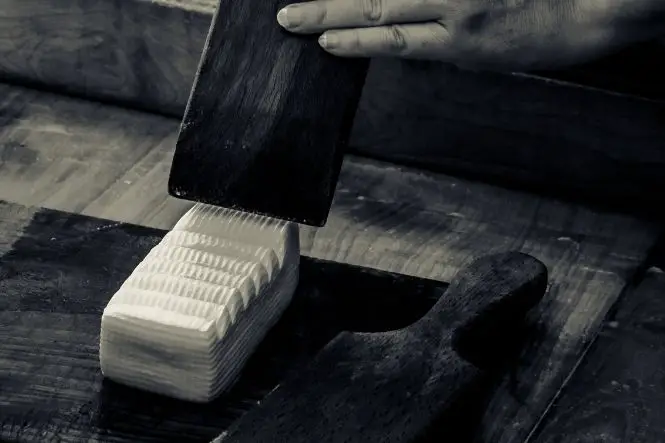Water solidifies or turns to ice at zero degrees centigrade. This experiment makes something that looks just like ice but forms at room temperature and gives off heat. The experiment involves heating solutions on the cooker hob – be very careful, and ask an adult to help if necessary.
Making Sodium Acetate
Pour a litre of clear vinegar (a weak solution of acetic acid) into a saucepan and mix in four tablespoons of bicarbonate of soda, a little at a time, stirring well (adding it too fast will make it froth up and spill over the sides of the pan). This reacts to create a dilute solution of sodium acetate and bubbles of carbon dioxide gas (see ‘Acids and Alkalis: Making Gases’). Evaporate some of the water off by boiling it gently – watch the top of the solution and wait until there is a fine layer of crystals on the surface. This might take about an hour. Don’t use too high a temperature; this will make the solution go brown or yellow. Stir the crystals that have formed on the surface back in and take the pan off the heat. If the crystals won’t redissolve, add a tiny amount of water or vinegar.
Pour the solution into a very clean jam jar and cover it, and allow it to cool. This is a supersaturated sodium acetate solution. A saturated solution is one that contains as much of a substance that can be normally dissolved in it at room temperature; a supersaturated solution is made by dissolving in more of the substance, usually by heating the solution.
Once it is cold, this is also known as a ‘super-cooled solution’, and adding a crystal of sodium acetate, or even just touching the surface of the solution can trigger the liquid to crystallise – this is called a ‘nucleation centre’. See see ‘Growing Crystals’ for more about crystallisation.
Pour the solution into a shallow dish. This on its own may cause crystals to form, and the solution will look like it is freezing. If the crystals do not form on their own, drop in a crystal of sodium acetate scraped from the side of the pan, or touch the surface with a finger. Touch the side of the dish. It will feel warm, as the crystallisation reaction produces heat – this is called an exothermic reaction.
The hot ice can be melted on the cooker or in the microwave and reused – do this very carefully, as it will become hot.
What Is Sodium Acetate Used For?
Sodium acetate is used as a flavouring in salt and vinegar crisps, in medicine, in fabric production, in make-up and to improve the flavour of food.
It is also used in pocket hand warmers. These sealed packs contain a supersaturated sodium acetate solution, with a small metal disk. The solution inside the heat pack is very pure, so it does not crystallise on its own. Bending the disk makes a few of the sodium acetate molecules crystallise. This triggers other molecules to crystallise and the reaction produces heat, and the hand-warmer heats up. Dropping the pack into boiling water for a few minutes melts the crystals and the solution becomes liquid again until the disk is clicked the next time.





